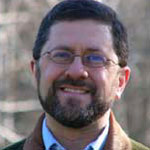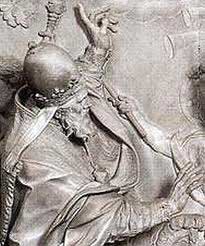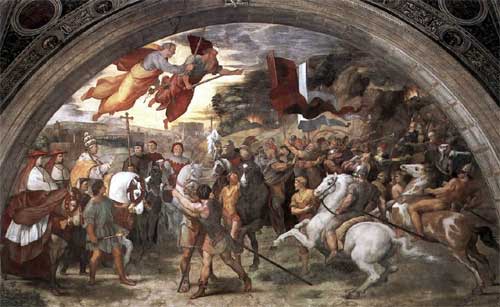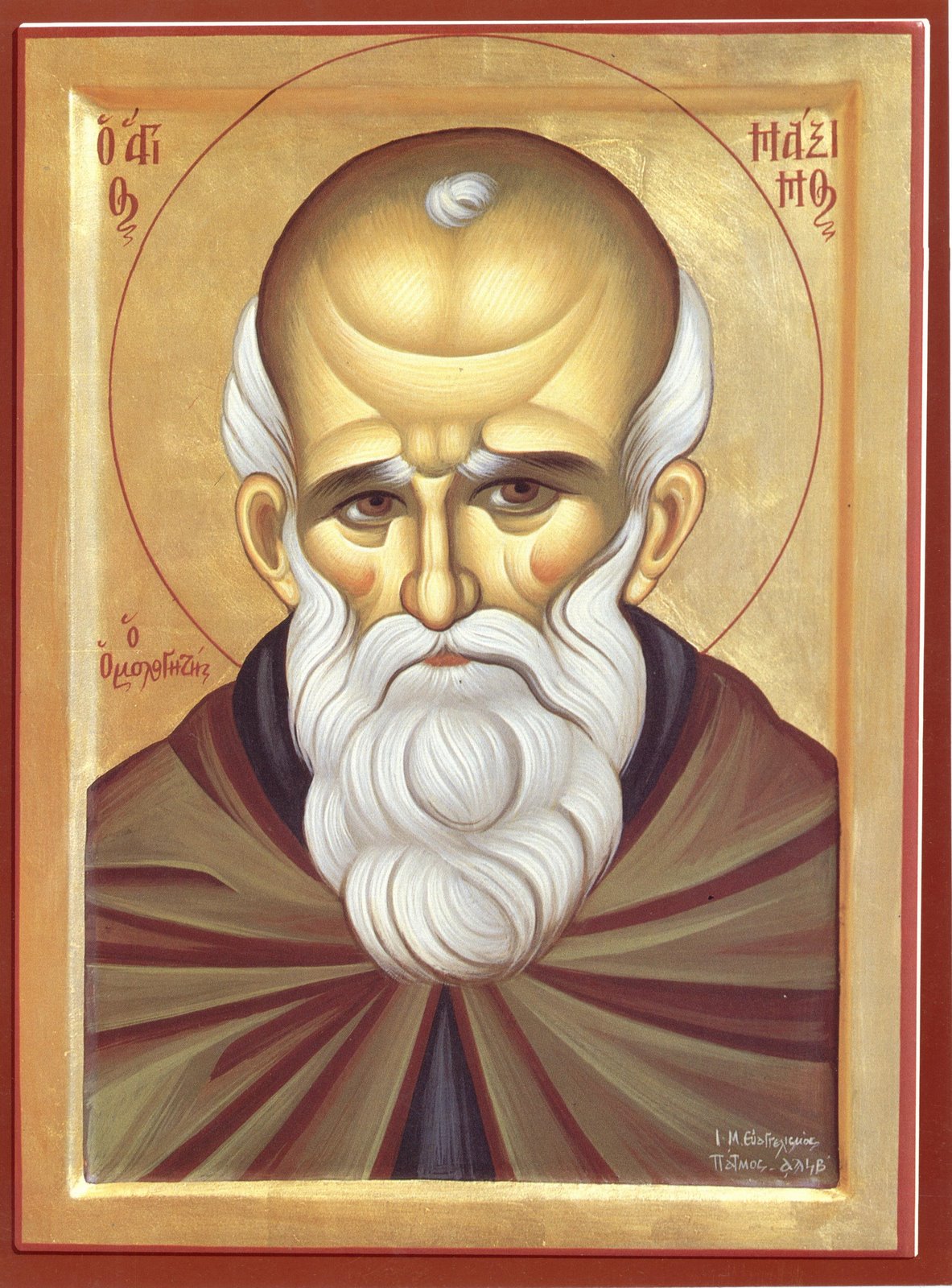What is old is new again. That’s why the Fathers are so important, they’ve done battle with the heresies that continue to plaque our Church even today. Also in his writings you can see the “Theology of the Body”…1800 years or so before we hear from Pope John Paul II. Faith and Reason can live in harmony…then knew it then and we can be confident about that now.
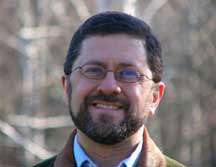 Take a listen to Mike Aquilna, who does a great job giving us the life of this early, early father of the Church, Clement of Alexandria.
Take a listen to Mike Aquilna, who does a great job giving us the life of this early, early father of the Church, Clement of Alexandria.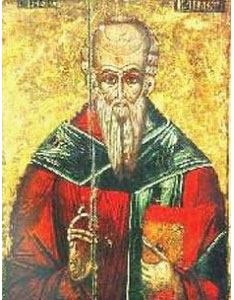
[powerpress]
Here in a very small nutshell is an overview of St. Clement of Alexandria –
from wikipedia –
Titus Flavius Clemens (c.150 – c. 215), known as Clement of Alexandria (to distinguish him from Clement of Rome), was a Christian theologian and the head of the noted Catechetical School of Alexandria. Clement is best remembered as the teacher of Origen. He united Greek philosophical traditions with Christian doctrine and valued gnosis that with communion for all people could be held by common Christians specially chosen by God.Though he constantly opposes the concept of gnosis as defined by the Gnostics, he used the term “gnostic” for Christians who had attained the deeper teaching of the Logos.He developed a Christian Platonism. He presented the goal of Christian life as deification, identified both as Platonism’s assimilation into God and the biblical imitation of God.
Like Origen, he arose from Alexandria’s Catechetical School and was well versed in pagan literature.Origen succeeded Clement as head of the school.Alexandria had a major Christian community in early Christianity, noted for its scholarship and its high-quality copies of Scripture.
Clement is counted as one of the early Church Fathers. He advocated a vegetarian diet and claimed that the apostles Peter, Matthew, and James the Just were vegetarians. – wikipedia
Great trilogy of St. Clement of Alexandria
The trilogy into which Clement’s principal remains are connected by their purpose and mode of treatment is composed of:
- the Protrepticus (“Exhortation to the Greeks”)
- the Paedagogus (“Instructor”)
- the Stromata (“Miscellanies”)
The first book deals with the religious basis of Christian morality, the second and third with the individual cases of conduct.
Tags: alexanderia, Church, clement of alexandria, early church fathers, faith and reason, father, father of the church, fathers mike, fathers of the church, gnostics, heresy, mike aquilina, Mike Aquilna
This entry was posted on Thursday, December 4th, 2014 at 8:26 am
You can follow any responses to this entry through the RSS 2.0 feed.
Learn more about St. Jerome in our fascinating discussion with Mike Aquilina
[powerpress]
Spiritual Writings:
 - Letters
-Â The Perpetual Virginity of Blessed Mary
-Â To Pammachius Against John of Jerusalem
-Â The Dialogue Against the Luciferians
-Â The Life of Malchus, the Captive Monk
-Â The Life of S. Hilarion
-Â The Life of Paulus the First Hermit
-Â Against Jovinianus
-Â Against Vigilantius
-Â Against the Pelagians
-Â Prefaces
-Â De Viris Illustribus (Illustrious Men)
-Â Apology for himself against the Books of Rufinus
Prayer to St. Jerome
 For Insight
Through your anger and confrontations you remind us that we all have a duty to confront others from time to time. You also remind us that we have a duty to examine ourselves and confront our own weaknesses and harmful behaviours. Your life teaches that I must accept others for who they are. You taught of the danger of self-righteousness; of the importance of reflecting upon one of Jesus’ most insightful teachings: “Let the man who has no sin on his conscience throw the first stone.” In the light of your teachings, Saint Jerome, help me to see my own self clearly. Help me to confront my own biases and to act to change others only out of love. If I see that I have the duty to confront another, I ask you to be with me during those necessary but unpleasant moments of confrontation. Help me to remember that love alone can make changes for the good.
Amen.
The Thunderer
God’s angry man, His crotchety scholar
Was Saint Jerome,Â
The great name-caller
Who cared not a dime
For the laws of Libel
And in his spare time
Translated the Bible.
Quick to disparage
All joys but learning
Jerome thought marriage
Better than burning;
But didn’t like woman’s
Painted cheeks;
Didn’t like Romans,
Didn’t like Greeks,
Hated Pagans
For their Pagan ways,
Yet doted on Cicero all of his days.
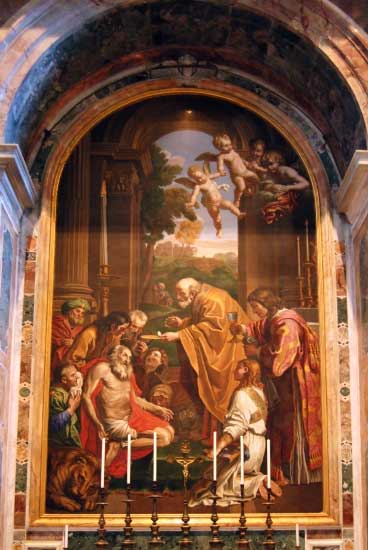
A born reformer, cross and gifted,
He scolded mankind
Sterner than Swift did;
Worked to save
The world from the heathen;
Fled to a cave
For peace to breathe in,
Promptly wherewith
For miles around
He filled the air with
Fury and sound.
In a mighty prose
For Almighty ends,
He thrust at his foes,
Quarreled with his friends,
And served his Master,
Though with complaint.
He wasn’t a plaster sort of a saint.
But he swelled men’s minds
With a Christian leaven.
It takes all kinds
To make a heaven
by Phyllis McGinley, from “Times Three: Selected Verse from Three Decades with Seventy New Poems”, (Pulitzer Prize Winner).
Tags: catholic, catholic podcast, catholic prayer, cathollc spirituality, father, fathers mike, love, mike aquilina, phyllis mcginley, saint jerome, St Jerome
This entry was posted on Tuesday, September 30th, 2014 at 12:13 pm
You can follow any responses to this entry through the RSS 2.0 feed.
 Mike Aquilina give us an overview of the great saints life and impact on the Church
Mike Aquilina give us an overview of the great saints life and impact on the Church
[powerpress]
St. John of Damascus, not only taught that icons and other sacred artworks are permissible because they point to the incarnation of Jesus, but he also understood the rich value of every word to do the same. He is considered one of the Church’s most gifted poets. Every sacred image, whether in art, hymn, poetry can be a prayer that leads us deeper into the heart of God.
The St. John Damascus site contains many of his writings…it’s fantastic!
“RIGHTEOUS JOHN OF DAMASCUS. He was raised in Damascus, Syria, the capital of the Moslem world. When he was ten years of age, his father found a learned monk in the secular studies as well as music and theology. He instructed John and his adopted brother, Cosmas, and John made great progress in theology. At last, the monk departed saying to their father, Sergius, that his sons had become remarkably wise. Sergius soon died, and John was chosen for his office of counselor to the caliph.
During this time, John wrote convincingly against the iconoclasts and Leo the Armenian, as well as the Moslems. He effectively used deductive arguments, history, and parables of the saints. Against the iconoclasts, he argued that since the shadows and handkerchiefs of the apostles healed the sick, why was it not appropriate to venerate their icons. His letters were circulated to strengthen and prepare the people to answer the attacks of the heretics. Seeing this, the emperor wrote a letter in John’s hand that had him condemned to the caliph for whom he worked. The caliph had his right hand cut off and hung in the market place. That night, John recovered his hand and prayed before an icon of the Theotokos, called of the three hands, promising that he would write hymns for Orthodoxy if he were healed. He slept, and she told him that he was healed and to write. The caliph freed him, and he became a humble monk. He wrote canons, troparia, idiomela, festal homilies for feast days of Jesus and the Theotokos, the saints and prophets. He established the Typikon, the order of services. He became the mouth piece of all the bishops of the east. He died peacefully at 104 years of age.” – from the St. John of Damascus Institute site – for a longer account go there
Spiritual Writings:
Exposition of the Faith
The video contains some of St. John Damascus’ teachings on the Blessed Virgin Mary
A Prayer of St. John of Damascus
I stand before the gates of thy Temple, and yet I refrain not from my evil thoughts. But do thou, O Christ my God, who didst justify the publican, and hadst mercy on the Canaanite woman, and opened the gates of Paradise to the thief; open unto me the compassion of thy love toward mankind, and receive me as I approach and touch thee, like the sinful woman and the woman with the issue of blood; for the one, by embracing thy feet received the forgiveness of her sins, and the other by but touching the hem of thy garment was healed. And I, most sinful, dare to partake of thy whole Body. Let me not be consumed but receive me as thou didst receive them, and enlighten the perceptions of my soul, consuming the accusations of my sins; through the intercessions of Her that without stain gave Thee birth, and of the heavenly Powers; for thou art blessed unto ages of ages. Amen.
Tags: art, Church, father, fathers mike, icons, john of damascus, mike aquilina, sacred image, secular studies, st john of damascus
This entry was posted on Wednesday, December 4th, 2013 at 12:34 am
You can follow any responses to this entry through the RSS 2.0 feed.
The story and history of Saint Clement.
![]() First, start with the podcast above featuring the son of the Fathers, Mike Aquilina talking about St. Clement, then…
First, start with the podcast above featuring the son of the Fathers, Mike Aquilina talking about St. Clement, then…
Clemens Romanus was born in Rome in Italy during the time that the Christian faith was being spread and Christians were being persecuted by the Roman Emperors. He is believed to be of Jewish descent and a freeman of Rome. He worked as a tanner
during the early part of his life. He was then converted to Christianity and became a disciple of St. Peter and of St. Paul. Following the death of Saint Peter he took over his position and became the fourth Pope and Bishop of Rome continuing to convert Romans from the religion of the old Roman gods to Christianity.
Saint Clement was banished from Rome during the reign of the Emperor Trajan (September 18, 53 – August 9, 117) due to his beliefs and unpopularity with the Roman rabble. He was banished to Chersonesus, which was an ancient Greek colony under Roman rule, in the south western part of Crimea (part of the Ukraine). In Chersonesus he was sentenced to work with other prisoners in a sto
ne quarry where he continued to convert people. The number and success of his conversions attracted the attention of the Roman prefect who sentenced him to death. Clement was he was bound to an anchor and cast into the sea. He died in A.D.100.
How blessed and amazing are God’s gifts, dear friends Life with immortality, splendor with righteousness, truth with confidence, faith with assurance, self-control with holiness And all these things are within our comprehension. Clement of Rome

Basilica of Saint Clement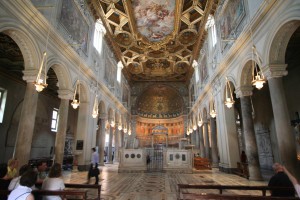
The Basilica di San Clemente is an early Christian basilica in Rome dedicated to Pope St. Clement. Its beautiful interior is especially notable for its three historical layers.
The main upper church is one of the most richly decorated churches in Rome. The vast majority of its architecture and art dates from its construction in the early 12th century. The entrance is on the left aisle.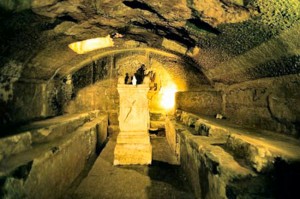
The most striking sight is the 12th-century apse mosaic, in a golden-bronze color and featuring a large cross in the center. In the center of the apse is a throne, whose back is part of a martyr’s tomb.
The high altar contains the relics of St. Clement of Rome and St. Ignatius of Antioch. Faded frescoes decorate many of the walls, and date from the 6th to 11th centuries. They depict New Testament scenes and lives of several saints.
Tags: basilica di san clemente, Church, churches in rome, clement of rome, emperor trajan, father of the church, fathers mike, mike aquilina, rome, saint clement, st clement of rome
This entry was posted on Saturday, November 23rd, 2013 at 12:02 am
You can follow any responses to this entry through the RSS 2.0 feed.
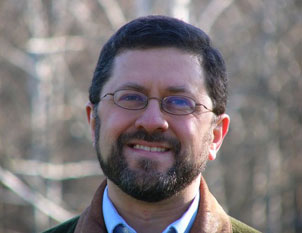 Mike Aquilina shares with Bruce and I the life and teaches of St. John Chrysostom.
Mike Aquilina shares with Bruce and I the life and teaches of St. John Chrysostom.
[powerpress]
John Chrysostom born in 347, his father died soon after his birth, leaving his mother,  Anthusa, a widow at the age of 20.  She never married, sticking with the teachings of St. Paul to stay unmarried; she was a devout Christian and was very committed to her son; they loved and cared for each other very much. She would raise up a son who had a great love for Jesus Christ and who would become of the greatest preachers of all time (imagine him the Billy Graham of his day). He would become the Archbishop of Constantinople, and an important Early Church Father. His denunciation of abuse of authority by both ecclesiastical and political leaders would get him in big trouble, but it didn’t stop him. After his death (or, according to some sources, during his life) he was given the Greek surname chrysostomos, meaning “golden mouthed”, rendered in English as Chrysostom.
Many Christian Churches love and claim St. John Chrysostom. The Orthodox and Eastern Catholic Churches honor him as a saint and count him among the Three Holy Hierarchs, together with Saints Basil the Great and Gregory Nazianzus. He is recognized by the Eastern Orthodox Church and Roman Catholic Church as a saint and Doctor of the Church. Churches of the Western tradition, including the Roman Catholic Church, some Anglican provinces, and parts of the Lutheran Church, commemorate him on 13 September. Some Lutheran and many Anglican provinces commemorate him on the traditional Eastern feast day of 27 January. The Coptic Orthodox Church of Alexandria recognizes John Chrysostom as a saint.
Spiritual Writings:
 - Homilies on the Gospel of St. Matthew
-Â Homilies on Acts
-Â Homilies on Romans
-Â Homilies on First Corinthians
-Â Homilies on Second Corinthians
-Â Homilies on Ephesians
-Â Homilies on Philippians
-Â Homilies on Colossians
-Â Homilies on First Thessalonians
-Â Homilies on Second Thessalonians
-Â Homilies on First Timothy
-Â Homilies on Second Timothy
-Â Homilies on Titus
-Â Homilies on Philemon
-Â Commentary on Galatians
-Â Homilies on the Gospel of John
-Â Homilies on the Epistle to the Hebrews
-Â Homilies on the Statues
-Â No One Can Harm the Man Who Does Not Injure Himself
-Â Two Letters to Theodore After His Fall
-Â Letter to a Young Widow
-Â Homily on St. Ignatius
-Â Homily on St. Babylas
-Â Homily Concerning “Lowliness of Mind”
-Â Instructions to Catechumens
-Â Three Homilies on the Power of Satan
-Â Homily on the Passage “Father, if it be possible . . .”
-Â Homily on the Paralytic Lowered Through the Roof
-Â Homily on the Passage “If your enemy hunger, feed him.”
-Â Homily Against Publishing the Errors of the Brethren
-Â First Homily on Eutropius
-Â Second Homily on Eutropius (After His Captivity)
-Â Four Letters to Olympias
-Â Letter to Some Priests of Antioch
-Â Correspondence with Pope Innocent I
-Â On the Priesthood.
.
Prayer is the light of the soul
A reading from the homilies of St John Chrysostom (Hom 6 on Prayer)
“There is nothing more worthwhile than to pray to God and to converse with him, for prayer unites us with God as his companions. As our bodily eyes are illuminated by seeing the light, so in contemplating God our soul is illuminated by him. Of course the prayer I have in mind is no matter of routine, it is deliberate and earnest. It is not tied down to a fixed timetable; rather it is a state which endures by night and day.
Our soul should be directed in God, not merely when we suddenly think of prayer, but even when we are concerned with something else. If we are looking after the poor, if we are busy in some other way, or if we are doing any type of good work, we should season our actions with the desire and the remembrance of God. Through this salt of the love of God we can all become a sweet dish for the Lord. If we are generous in giving time to prayer, we will experience its benefits throughout our life.
Prayer is the light of the soul, giving us true knowledge of God. It is a link mediating between God and man. By prayer the soul is borne up to heaven and in a marvellous way embraces the Lord. This meeting is like that of an infant crying on its mother, and seeking the best of milk. The soul longs for its own needs and what it receives is better than anything to be seen in the world.
Prayer is a precious way of communicating with God, it gladdens the soul and gives repose to its affections. You should not think of prayer as being a matter of words. It is a desire for God, an indescribable devotion, not of human origin, but the gift of God’s grace. As Saint Paul says: we do not know how to pray as we ought, but the Spirit himself intercedes for us with sighs too deep for words.
Anyone who receives from the Lord the gift of this type of prayer possesses a richness that is not to be taken from him, a heavenly food filling up the soul. Once he has tasted this food, he is set alight by an eternal desire for the Lord, the fiercest of fires lighting up his soul.
To set about this prayer, paint the house of your soul with modesty and lowliness and make it splendid with the light of justice. Adorn it with the beaten gold of good works and, for walls and stones, embellish it assiduously with faith and generosity. Above all, place prayer on top of this house as its roof so that the complete building may be ready for the Lord. Thus he will be received in a splendid royal house and by grace his image will already be settled in your soul.
Â
Tags: doctor of the church, eastern catholic churches, father of the church, fathers mike, heaven, John Chrysostom, mike aquilina, mother, prayer, st john chrysostom
This entry was posted on Friday, September 13th, 2013 at 7:12 am
You can follow any responses to this entry through the RSS 2.0 feed.
We talk with Mike Aquilina  about St. Gregor the Great, a father of the Church.
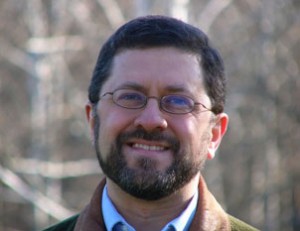 [powerpress]
[powerpress]
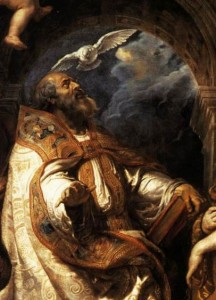 St. Gregory the Great…the tradition of the Church considers him one of the four great doctors of the Latin Church. Born in Rome, Italy, in AD 540, St. Gregory was the son of Gordianus, a wealthy senator, and Silvia, who later became a saint. (Saints make saints after all…).
St. Gregory the Great…the tradition of the Church considers him one of the four great doctors of the Latin Church. Born in Rome, Italy, in AD 540, St. Gregory was the son of Gordianus, a wealthy senator, and Silvia, who later became a saint. (Saints make saints after all…).
His youth was a troubled one. In his writings he chronicles the perpetual seiges that Rome endured at the hands of the barbarians.  Those nasty Lombards! Pillaging, raping, massacring, they would plague the Church and the people of the land for 200 years, you name it..by any standard, they were bad!
Saint Gregory became the Prefect of Rome at the age of thirty, and the people loved him because he was able to keep them safe. A few years later, like his parents, he gave his wealth away. He became a Benedictine monk. But the pope of the time, recalled him to Rome to serve as a deacon and to help the city, which was again attacked by the Lombards.
On the third day of September in 590, after he had first been ordained a priest, Saint Gregory was consecrated Pope and Bishop of Rome, in Saint Peter’s Basilica. He was the first monk to become Pope.  The Holy Spirit didn’t waste anytime moving him to service!
Through Saint Leander and his brother, Saint Isidore of Seville, as well as the martyr  Saint Hermenegild, Saint Gregory recovered Spain from the Arians. Through Queen Theodelinda, the wife of the Lombard King Agilulf, he was able to begin the conversion of the Lombard nation and the tempering of their ferocious and cruel natures. He won France back and began conversions in England. Saint Gregory was, above all else, a vigilant guardian of the Church’s doctrine, always the mark of a holy Pope. He ordained, early in his pontificate that the first four Ecumenical Councils of the Church should be treated with the respect given to the four Gospels. He worked unceasingly to stamp out heresy. He ordered that at the beginning of Lent the blessed ashes should be placed on the foreheads of the faithful, instead of only the head of the Pope — as had been the custom up to that time — and that the priest should repeat to each one, “Remember man, that dust thou art, and unto dust thou shalt return”. excerpted in part from an article by Sister Catherine Goddard Clark, M.I.C.M.
Saint Hermenegild, Saint Gregory recovered Spain from the Arians. Through Queen Theodelinda, the wife of the Lombard King Agilulf, he was able to begin the conversion of the Lombard nation and the tempering of their ferocious and cruel natures. He won France back and began conversions in England. Saint Gregory was, above all else, a vigilant guardian of the Church’s doctrine, always the mark of a holy Pope. He ordained, early in his pontificate that the first four Ecumenical Councils of the Church should be treated with the respect given to the four Gospels. He worked unceasingly to stamp out heresy. He ordered that at the beginning of Lent the blessed ashes should be placed on the foreheads of the faithful, instead of only the head of the Pope — as had been the custom up to that time — and that the priest should repeat to each one, “Remember man, that dust thou art, and unto dust thou shalt return”. excerpted in part from an article by Sister Catherine Goddard Clark, M.I.C.M.
He is known for his magnificent contributions to the Liturgy of the Mass and Office. The “Gregorian Chant” is named in honor of Saint Gregory’s patient labor in restoring the ancient chant of the Church and in setting down the rules to be followed so that Church music might more perfectly fulfill its function.
Saint Gregory the Great died on the twelfth of March, 604, at the age of sixty-four. He was canonized immediately after his death. Later, because of the volume, the extraordinary insight and the profundity of his writings, the depth and extent of his learning, and the heroic holiness of his life, the Church gratefully placed him beside Jerome and Ambrose and Augustine. Saint Gregory the Great became the fourth of the Church’s four great Doctors of the West. –
What would today be like without a little Gregorian Chant in honor of our St. Gregory?
 Spiritual Writings:
-Â Pastoral Rule
-Â Register of Letters
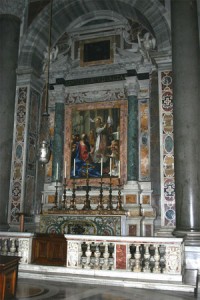 The altar of St. Gregory the Great at St. Peter’s in Rome. One of my favorite places to pray at the Vatican.Â
The altar of St. Gregory the Great at St. Peter’s in Rome. One of my favorite places to pray at the Vatican.Â
Tags: benedictine monk, bishop of rome, Church, ecumenical councils of the church, fathers mike, holy spirit, Latin Church, our sunday visitor, rome, saint gregory
This entry was posted on Tuesday, September 3rd, 2013 at 12:01 am
You can follow any responses to this entry through the RSS 2.0 feed.
Mike Aquilina shares with us the story of St. Agnes.
[powerpress]
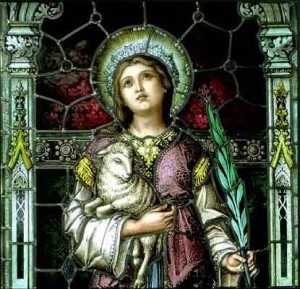 A young girl who would help to break open the hearts of many, so that grace could pour in. She was “a lamb for Christ”.  Mike also discusses the challenges to life, including the “ancient” practice of abortion.
A young girl who would help to break open the hearts of many, so that grace could pour in. She was “a lamb for Christ”.  Mike also discusses the challenges to life, including the “ancient” practice of abortion.
wiki – According to tradition, Saint Agnes was a member of the Roman nobility born c. 291 and raised in a Christian family. She suffered martyrdom at the age of twelveor thirteen during the reign of the Roman Emperor Diocletian, on 21 January 304.
The Prefect Sempronius wished Agnes to marry his son, and on Agnes’ refusal he condemned her to death. As Roman law did not permit the execution of virgins, Sempronius had a naked Agnes dragged through the streets to a brothel. Various versions of the legend give different methods of escape from this predicament. In one, as she prayed, her hair grew and covered her body. It was also said that all of the men who attempted to rape her were immediately struck blind. In another the son of the prefect is struck dead, but revived after Agnes prayed for him, causing her release. There is then a trial from which Sempronius excuses himself, and another figure presides, sentencing her to death. When led out to die she was tied to a stake, but the bundle of wood would not burn, or the flames parted away from her, whereupon the officer in charge of the troops drew his swordbeheaded her, or, in some other texts, stabbed her in the throat. It is also said that the blood of Agnes poured to the stadium floor where other Christians soaked up the blood with cloths. and
The daughter of Constantine I, Saint Constance, was also said to have been cured of leprosy after praying at Agnes’ tomb.
A prayer to St. Agnes
Let us gain courage for our own battle
by honoring the martyrdom of the glorious virgin Agnes.
St. Agnes, vessel of honor,
flower of unfading fragrance,beloved of the choirs of Angels,you are an example to the worth of virtue and chastity.
O you who wear a Martyr’s palm
and a virgin’s wreath,
pray for us that,
though unworthy of a special crown,
we may have our names written in the list of Saints.
Tags: catacomb, fathers mike, hearts, martyrdom, mike aquilina, saint agnes, virgins, virtue
This entry was posted on Monday, January 21st, 2013 at 12:43 am
You can follow any responses to this entry through the RSS 2.0 feed.
“Remember always…a tranquil conscience and an assured innocence produce a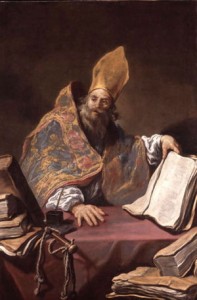 blessed life”
blessed life”
Saint Ambrose (c. between 337 and 340 – 4 April 397), was a bishop of Milan who became one of the most influential Church figures of the 4th century. Mariologist, heresy buster, emperor tamer, lover of hymns, an answer to a mother’s prayer (ask St. Monica), you name it, St. Ambrose fills the bill…
Did you know that St. Ambrose was one of the first recorded instances of someone reading silently? Interesting…
 Did you know that he received, essentially, the sacramental Grand Slam all at once? Wonder what that is?
Did you know that he received, essentially, the sacramental Grand Slam all at once? Wonder what that is?
…well let’s ask Mike Aquilina. Take a listen [powerpress]
For a fuller a rendering of his life, visit New Advent
So, so much from St. Ambrose! First, better to hear from the man himself (sort of…)
On Holy Mary
Next on Holy Repentance
A prayer of St. Ambrose
Lord Jesus Christ, I approach your banquet table in fear and trembling, for I am a sinner, and dare not rely on my own worth but only on your goodness and mercy. I am defiled by many sins in body and soul, and by my unguarded thoughts and words.
Gracious God of majesty and awe, I seek your protection, I look for your healing. Poor troubled sinner that I am, I appeal to You, the fountain of all mercy. I cannot bear your judgment, but I trust in your salvation. Lord, I show my wounds to You and uncover my shame before You. I know my sins are many and great, and they will fill me with fear, but I hope in Your Mercies, for they cannot be numbered.
Lord Jesus Christ, eternal king, God and man, crucified for mankind, look upon me with mercy and hear my prayer, for I trust in You. Have mercy on me, full of sorrow and sin, for the depth of your compassion never ends.
Praise to You, saving sacrifice, offered on the wood of the cross for me and for all mankind. Praise to the noble and precious blood, flowing from the wounds of my crucified Lord Jesus Christ and washing away the sins of the whole world. Remember, Lord, your creature, whom You have redeemed with Your Blood. I repent my sins, and I long to put right what I have done. Merciful Father, take away all my offenses and sins; purify me in body and soul, and make me worthy to taste the holy of holies.
May Your Body and Blood, which I intend to receive, although I am unworthy, be for me the remission of my sins, the washing away of my guilt, the end of my evil thoughts, and the rebirth of my better instincts. May it incite meto do the works pleasing to You and profitable to my health in body andsoul, and be a firm defense against the wiles of my enemies.
Tags: Church, conscience, doctors of the church, father of the church, fathers mike, mercy, mike aquilina, Saint Ambrose, st ambrose, st. paul center for biblical theology
This entry was posted on Friday, December 7th, 2012 at 12:21 am
You can follow any responses to this entry through the RSS 2.0 feed.
The importance of his life and contribution to the Church cannot be overstated. St. Augustine, one of the greatest of the Church Fathers, has not only influenced the Church, but the thought of the world as we know it. The story of his conversion as chronicled in his “Confessions”, would be 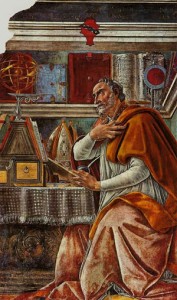 enough, but then add the body of his theological work and you have nothing less than a glimpse of what is truly the power of “grace and mercy”.
enough, but then add the body of his theological work and you have nothing less than a glimpse of what is truly the power of “grace and mercy”.
Mike Aquilina is one of the best at bringing this great saint’s life into perspective.
For a more detail accounting of St. Augustine’s  life, you can visit Lives of the Saints
Spiritual Writings:
-Â ConfessionsÂ
-Â Letters
-Â City of God
-Â Christian Doctrine
-Â On the Holy Trinity
-Â The Enchiridion
-Â On the Catechising of the Uninstructed
-Â On Faith and the Creed
-Â Concerning Faith of Things Not Seen
-Â On the Profit of Believing
-Â On the Creed: A Sermon to Catechumens
-Â On Continence
-Â On the Good of Marriage
-Â On Holy Virginity
-Â On the Good of Widowhood
-Â On Lying
-Â To Consentius: Against Lying
-Â On the Work of Monks
-Â On Patience
-Â On Care to be Had For the Dead
-Â On the Morals of the Catholic Church
-Â On the Morals of the Manichaeans
-Â On Two Souls, Against the Manichaeans
-Â Acts or Disputation Against Fortunatus the Manichaean
-Â Against the Epistle of Manichaeus Called Fundamental
-Â Reply to Faustus the Manichaean
-Â Concerning the Nature of Good, Against the Manichaeans
-Â On Baptism, Against the Donatists
-Â Answer to Letters of Petilian, Bishop of Cirta
-Â Merits and Remission of Sin, and Infant Baptism
-Â On the Spirit and the Letter
-Â On Nature and Grace
-Â On Man’s Perfection in Righteousness
-Â On the Proceedings of Pelagius
-Â On the Grace of Christ, and on Original Sin
-Â On Marriage and Concupiscence
-Â On the Soul and its Origin
-Â Against Two Letters of the Pelagians
-Â On Grace and Free Will
-Â On Rebuke and Grace
-Â The Predestination of the Saints/Gift of Perseverance
-Â Our Lord’s Sermon on the Mount
-Â The Harmony of the Gospels
-Â Sermons on Selected Lessons of the New Testament
-Â Tractates on the Gospel of John
-Â Homilies on the First Epistle of John
-Â Soliloquies
-Â The Enarrations, or Expositions, on the Psalms
For me, out of all the St. Augustine’s work, this is the piece that deeply touches my heart and is one of my all-time favorite prayers:
Late Have I Loved You
A Prayer of Saint Augustine
Late have I loved you, O Beauty, so ancient and so new, late have I loved you!
And behold, you were within me and I was outside, and there I sought for you, and in my deformity I rushed headlong into the well-formed things that you have made.
You were with me, and I was not with you. Those outer beauties held me far from you, yet if they had not been in you, they would not have existed at all.
You called, and cried out to me and broke open my deafness; you shone forth upon me and you scattered my blindness.
You breathed fragrance, and I drew in my breath and I now pant for you.
I tasted, and I hunger and thirst; you touched me, and I burned for your peace.
This prayer is from his book, “Confessions.”
                         Â
Tags: confessions, conversion, fathers mike, grace and mercy, mike aquilina, our sunday visitor, prayer, st augustine
This entry was posted on Tuesday, August 28th, 2012 at 12:22 am
You can follow any responses to this entry through the RSS 2.0 feed.
No one, however weak, is denied a share in the victory of the cross.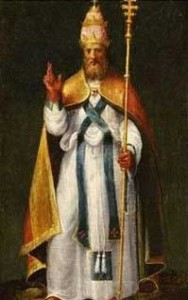
No one is beyond the help of the prayer of Christ.
– St. Leo the Great
How do you stop a barbarian invader like Attila from sacking your town? Pray, pray, pray…just ask St. Leo the Great.
 Take a listen to Mike Aquilina (the “great” son of the Fathers) talk about St. Leo the Great:
Take a listen to Mike Aquilina (the “great” son of the Fathers) talk about St. Leo the Great:
[powerpress]
CNA –Pope Leo the Great is the first Pope whose sermons and letters, many of which were on faith and charity, were preserved in extensive collections. He served as pontiff from 440 until his death in 461. His writing on the Incarnation was acclaimed at the Council of Chalcedon in 451. –
Prior to his pontificate, Leo was a deacon and active as a peacemaker in the Roman Empire. He is most remembered for having successfully persuaded Attila the Hun not to plunder Rome. He was not as successful during
another attack three years later, however. Nevertheless, he managed to save the city from being burnt. He stayed on to help the people rebuild Rome.
He was made a Doctor of the Church in 1754-CNA
This is the chapel/altar area with the tomb of St. Leo in St. Peter’s in Rome. It was restricted to the public for some reason. But I was able to get close, because I went to confession in that area (a very interesting story I’ll share some day).
 Here is the “great” painting by Raphael that is in the Vatican Museum of St. Leo imploring Attilia to back off and change his ways (and he did, go figure)
Spiritual Writings –
 - Sermons
-Â Letters
Tags: catholic, catholic podcast, catholic prayer, cathollc spirituality, council of chalcedon, doctor of the church, fathers mike, pope leo, st leo, vatican museum
This entry was posted on Thursday, November 10th, 2011 at 12:10 am
You can follow any responses to this entry through the RSS 2.0 feed.
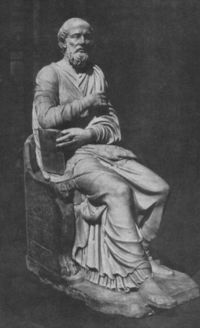 An anti-pope (and a great liturgist…it figures doesn’t it) who is considered a father of the Church and a saint. God’s great mercy knows no bounds! How does someone who was a self proclaimed pope (and considered the first anti-pope in Church history) become a saint? The story of St. Hippolytus is a fascinating one. A greek-speaking priest who who lived in the late 100’s – early 200’s; his writings on the Eucharistic liturgy are some of the most beautiful of all time. Check him out Mike Aquilina’s great blog The Ways of the Fathers  Â
An anti-pope (and a great liturgist…it figures doesn’t it) who is considered a father of the Church and a saint. God’s great mercy knows no bounds! How does someone who was a self proclaimed pope (and considered the first anti-pope in Church history) become a saint? The story of St. Hippolytus is a fascinating one. A greek-speaking priest who who lived in the late 100’s – early 200’s; his writings on the Eucharistic liturgy are some of the most beautiful of all time. Check him out Mike Aquilina’s great blog The Ways of the Fathers  Â
 
And take a listen as we talk about St. Hippolytus with Mike  Â
Â
Â
St. Maximus the Confessor lived approx. 500 years after Hippolytus. He is one of last fathers of the Church and is consider one of the first of her doctors. A beautiful writer and homelist he said this once: Â
The sun of justice, rising into the clean mind, reveals Himself and the reasons of all that He created and will create.
Love defeats those three: self-deception, because she is not proud; Interior envy, because she is not jealous; Exterior envy, because she is generous and serene.
All the treasures of wisdom and knowledge are inside our hearts hidden.
Faith without love does not act in the soul the illumination of the divine knowledge.
When the mind receives the ideas of things, by its nature is transformed according to each and every idea. If it sees the things spiritually, it is transfigured in many ways according to each vision. But if the mind becomes in God, then it becomes totally shapeless and formless, because seeing Him who has one face it comes to have one face and then the whole mind becomes a face of light.- taken from Speech on Love
Mike Aquilina’s excellent book “the Fathers of the Church” is a great 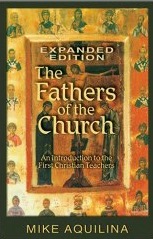 introduction to the First Christian teachers.
introduction to the First Christian teachers.
It’s important I think to hear the stories of these great thinkers of the Church, who when the time came in a crazy world, had the courage to speak truth and surrender to God’s great love…if they can do it, why can’t we?
Tags: catholic, catholic podcast, catholic prayer, cathollc spirituality, eucharistic liturgy, father of the church, fathers mike, fathers of the church, hippolytus, liturgist, maximus, mike aquilina, our sunday visitor
This entry was posted on Friday, August 13th, 2010 at 1:05 pm
You can follow any responses to this entry through the RSS 2.0 feed.









